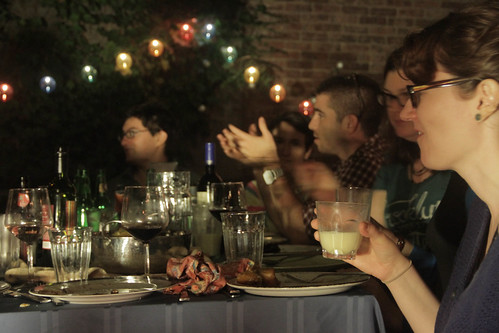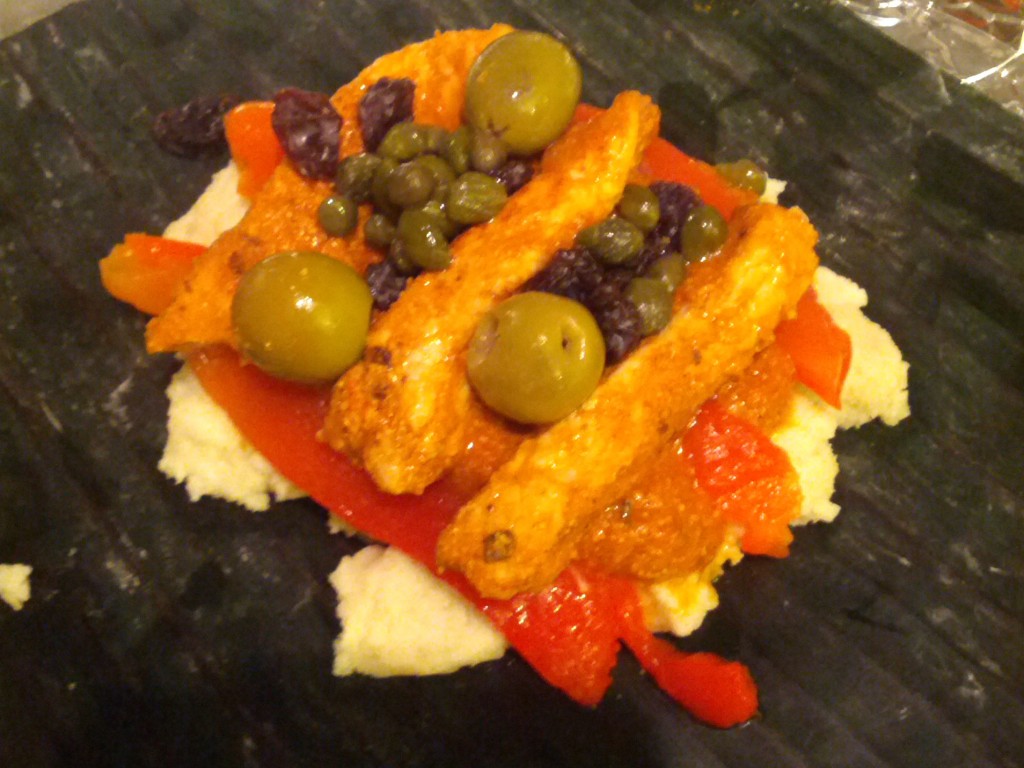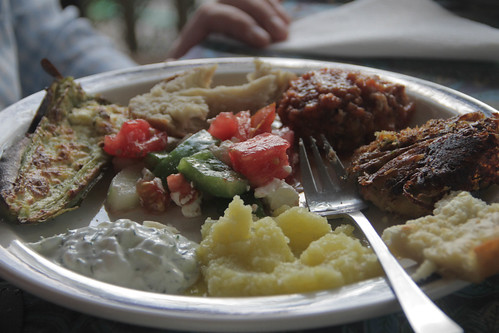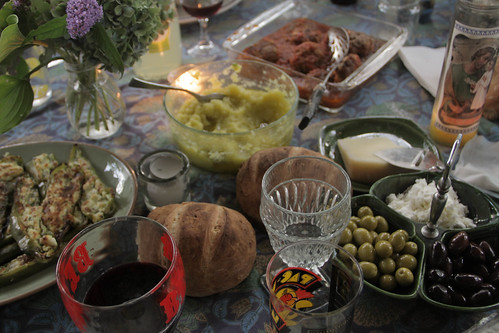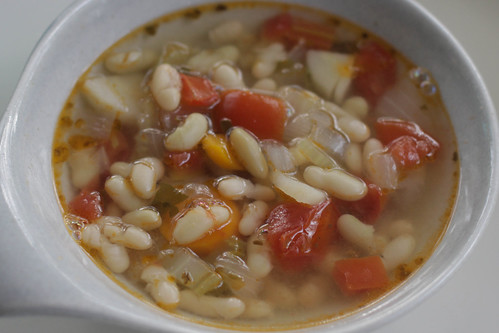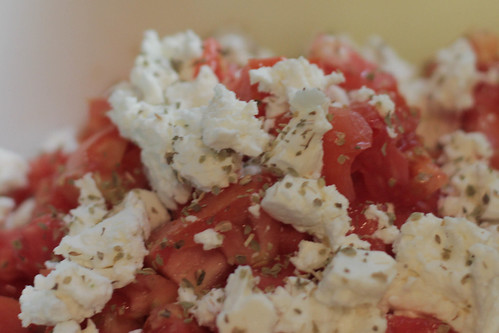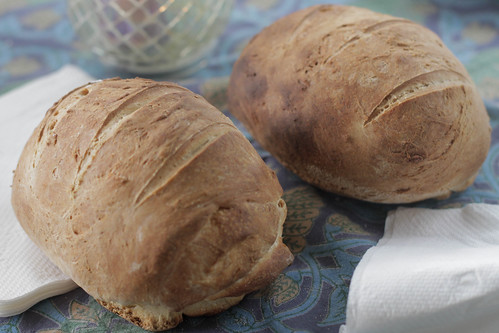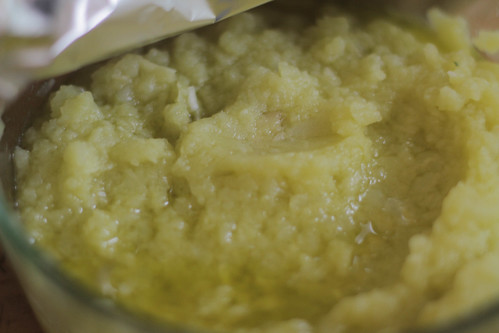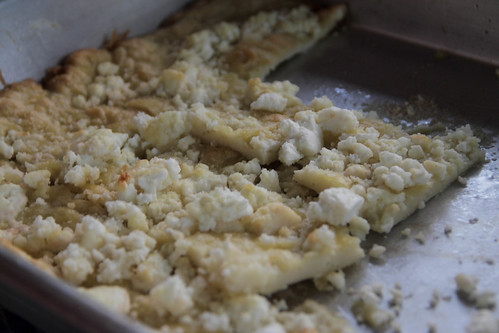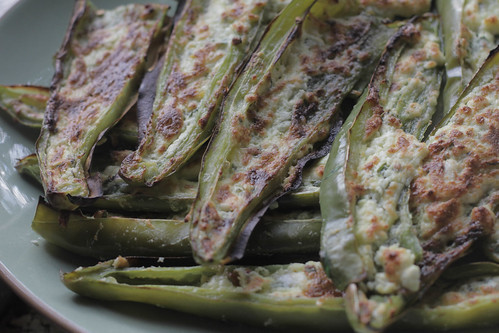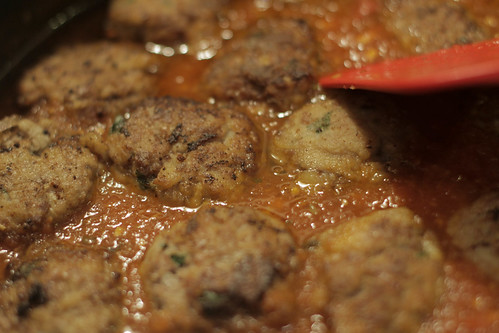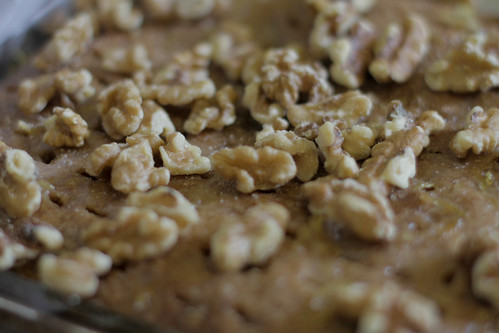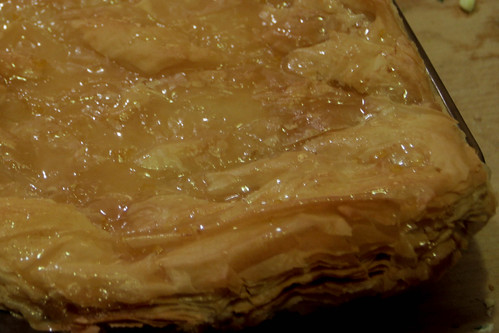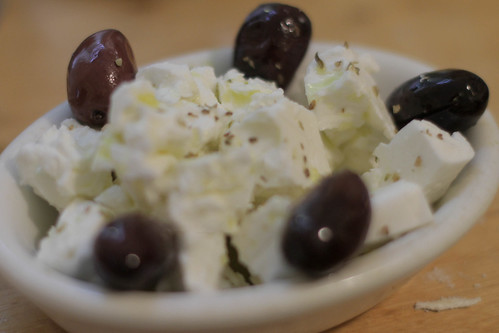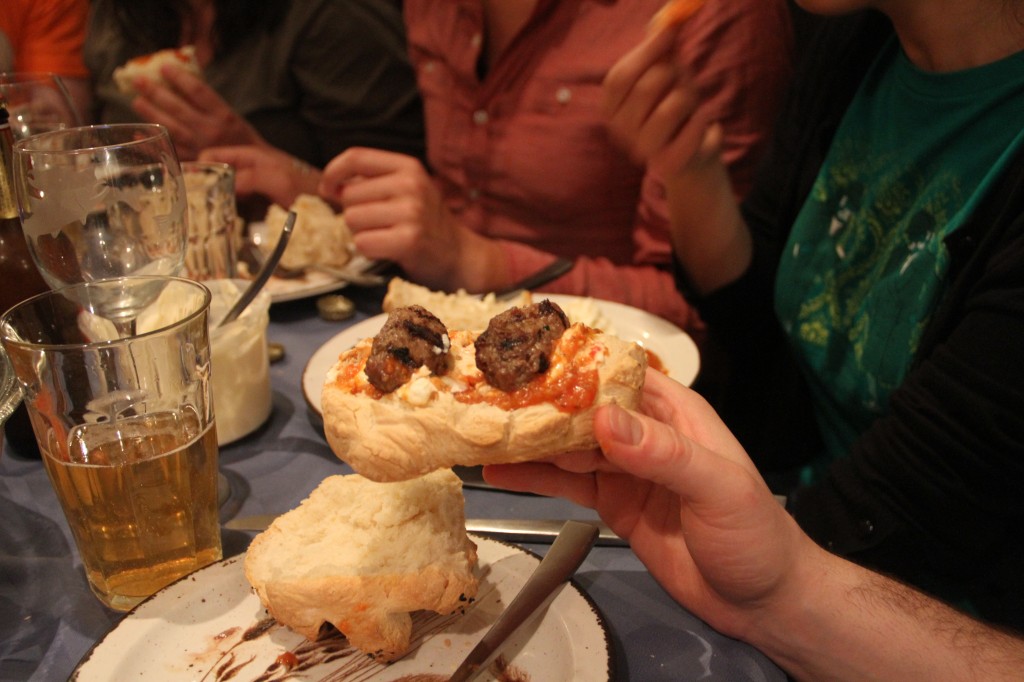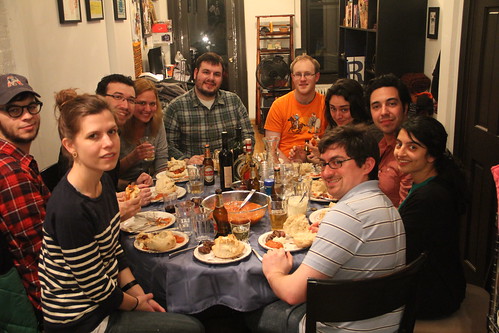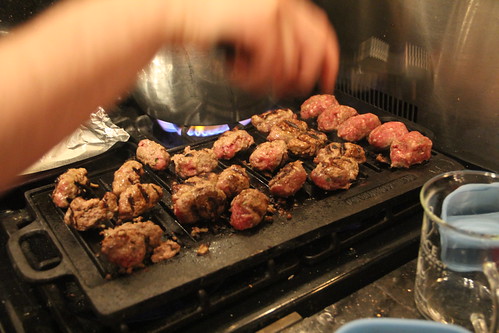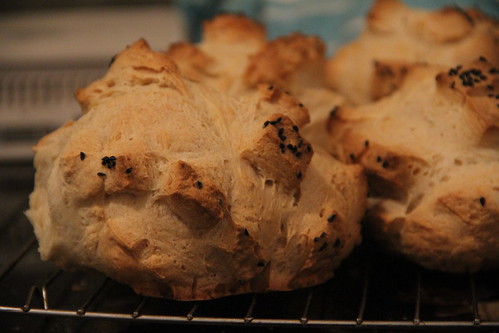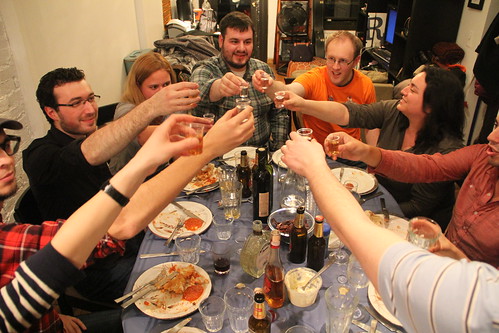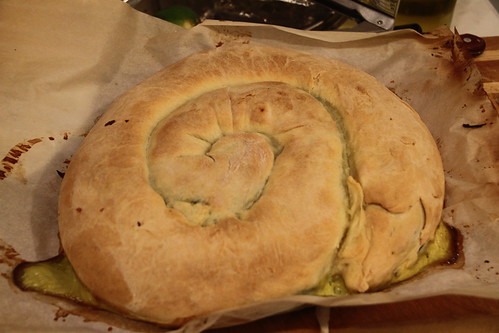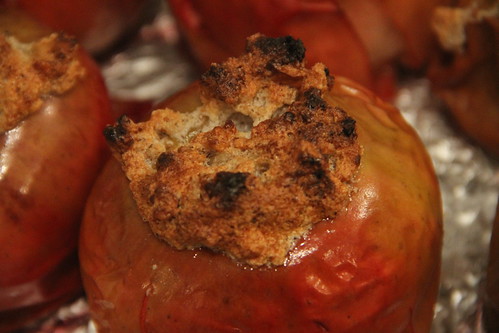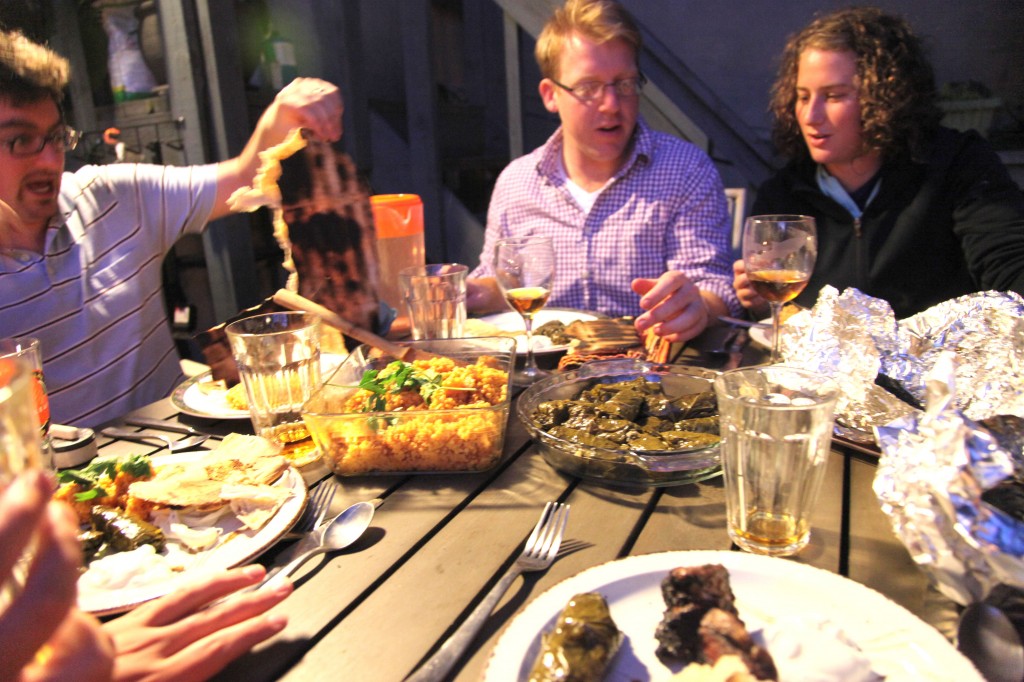Corn, beans, tomatoes, squash, peppers, turkey...if it's a classic New World food, chances are you'll see it in Guatemalan cuisine. While it's incorporated smatterings of good stuff from Europe (note the olives in the tamales), by and large this meal could have been cooked six hundred years ago, before a conquistador set foot on Mayan lands. However so ancient the ingredients may be, the techniques aren't: I made liberal use of the blender, and really wish I'd had a food mill, since there was a lot of tedious straining of blended sauces. We were fortunate to have some experts on hand: Mica on the left grew up in Guatemala, and Christen on the right met Laura on a human rights delegation in Guatemala. Between them are Alex, Laurel, Diana, Jennifer, Grant, Sophie, and Suzanne.

Tamales colorados | Red tamales | Recipe: Crisco; Lard: Spanish, English
This may be an unpopular opinion, but I find Mexican tamales too dry, and too sparse on filling relative to the mass of corn. Happily, Guatemalan tamales suffer neither of those challenges. Rice and fat moisten up the masa quite well, and the filling is intended to be generous.
OK, this was a lot of work. Even making the pumpkin-seed-based tomato sauce was the effort of an average dish, what with individually toasting the different seeds in addition to simmering the sauce. Add to that cooking up the pork, roasting the peppers, and especially the forearm-building effort of mixing the masa...and now it's time to trim the banana leaves, and finally to assemble and wrap the tamales before a good 90 minutes of steaming.
The results were well worth it, a tasty bundle of flavor with so many different textures and directions. But I can understand why most Guatemalan families don't make this more than once a year!
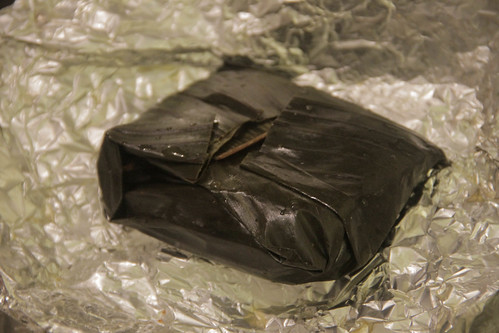
Kaq'ik | Turkey and smoked chili soup | Recipe
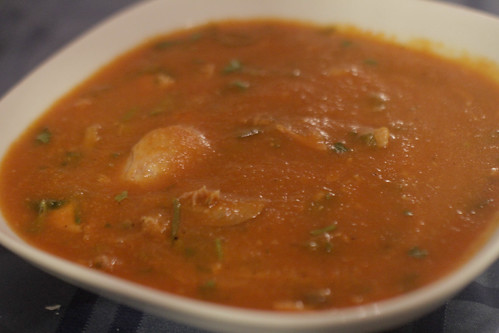
This soup pre-dates the arrival of the conquistadores, and some consider it the national dish of Guatemala. As with so many ancient recipes, there are as many variations as there are abuelitas, but the important part is to have turkey, chilies (including a smoked variety), and a tomato-rich broth. There are two aspects I particularly liked about this recipe. The first is that you broil all the vegetables, including even the dried chilies, lending a depth you just don't get from sauteeing. The other is that it has you use just turkey legs, rather than the whole bird, and I'm much more a fan of dark meat, especially to go along with those roasted veggies. While not so labor-intensive as the tamales, this certainly isn't the simplest soup to whip together, but I didn't at all mind the work after enjoying the depth of flavor from the roasting combined with the slow simmering of the turkey.
Frijoles negros | Black beans | Recipe

While the tamales and kaq'ik are special-occasion dishes unique to Guatemala in their preparation, it's the black beans that led the folks who'd lived in the country to reminisce. I cooked them in the crock pot, a technique I'm growing to love because it really allows the flavors to meld while also preserving the structural integrity of the bean. This recipe has plenty of vegetables, including a whole head of garlic, plus onion and bell pepper. I didn't add salt at all, because the topping took care of it: the appropriately named queso duro frijolero, or "hard cheese for beans." Saltier even than parmesan, it suits its title so very well. I'm glad I made a double-batch, because we enjoyed the leftovers throughout of the following week.
Ayote en dulce | Squash stewed in sweet sauce | Recipe: Spanish, English

Though we were a month out from the Day of the Dead, Guatemala has such a particular cuisine for that holiday that I felt compelled to make something from it. I chose to make this winter squash simmered in a sugary, gently spiced sauce, which is then boiled until syrupy. I'd say the dish was okay, but didn't quite bring the flavor punch I'd been expecting. I'm pretty sure I got the right kind of green-skinned, fairly smooth squash (thank you, farmers' market!), so either I started with too much water and hence had to boil it too long to thicken it, or maybe this dish is just supposed to be subtle.
Atole de elote | Corn and milk drink | Recipe

This drink, on the other hand, was more of an intense experience than I'd bargained for. You go through a lot of corn -- one ear per cup of drink -- and blend the kernels with milk, then strain it out and sweeten and cinnamon it up. With the nuttiness of the fresh corn plus the richness of milk, this warm beverage is a thick one. Would probably go even better on a chilly day, perhaps even as a breakfast drink.
I'm posting this on World Food Day. That marks one year since we did that epic Democratic Republic of the Congo meal for 75 at the youth hostel. We've now raised just about $16,000, enough for 64,000 meals. Please take a moment to think about the joy of food and the comfort of food security -- it's something we really oughtn't take for granted.
